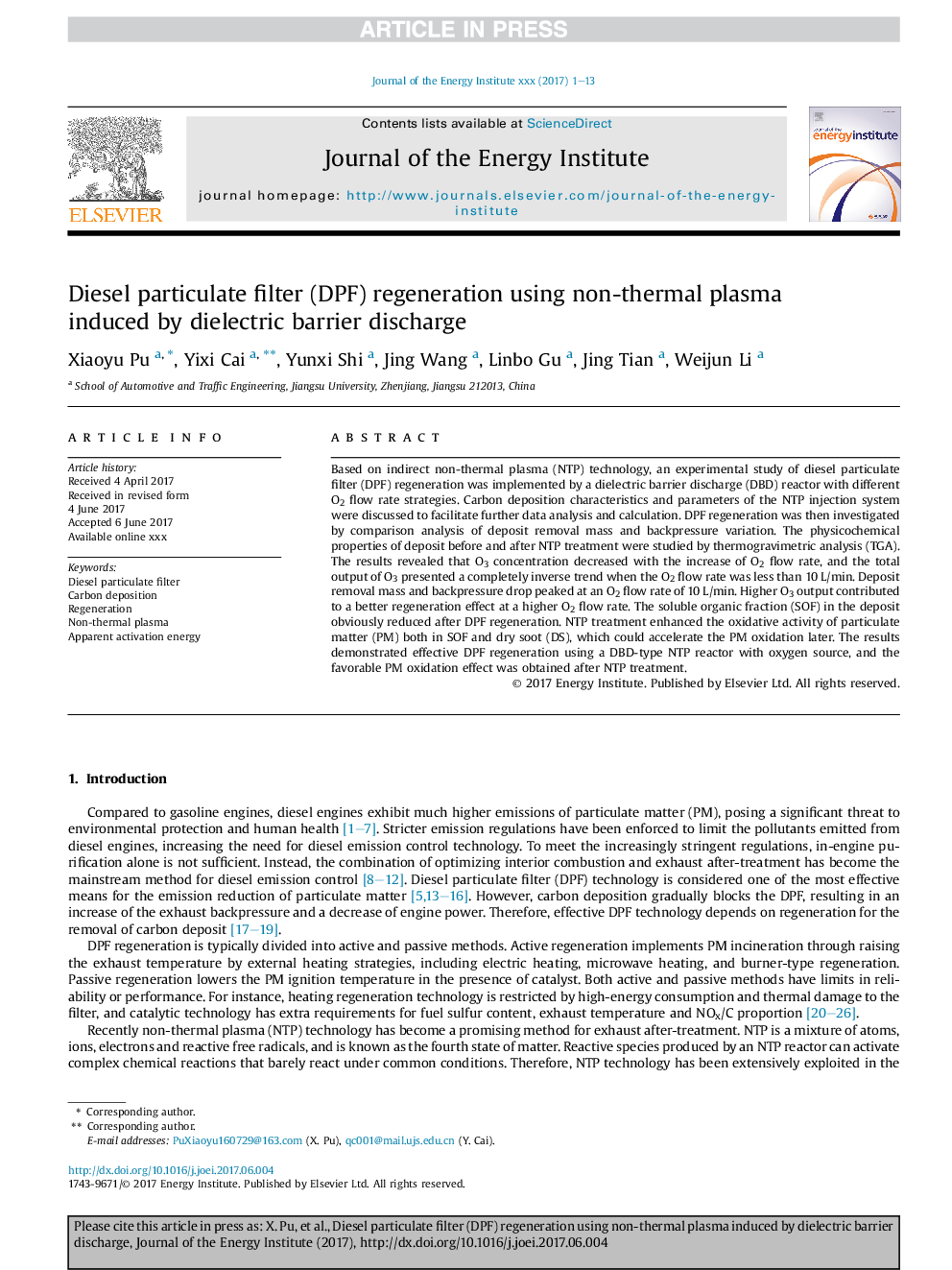| Article ID | Journal | Published Year | Pages | File Type |
|---|---|---|---|---|
| 8955754 | Journal of the Energy Institute | 2018 | 13 Pages |
Abstract
Based on indirect non-thermal plasma (NTP) technology, an experimental study of diesel particulate filter (DPF) regeneration was implemented by a dielectric barrier discharge (DBD) reactor with different O2 flow rate strategies. Carbon deposition characteristics and parameters of the NTP injection system were discussed to facilitate further data analysis and calculation. DPF regeneration was then investigated by comparison analysis of deposit removal mass and backpressure variation. The physicochemical properties of deposit before and after NTP treatment were studied by thermogravimetric analysis (TGA). The results revealed that O3 concentration decreased with the increase of O2 flow rate, and the total output of O3 presented a completely inverse trend when the O2 flow rate was less than 10Â L/min. Deposit removal mass and backpressure drop peaked at an O2 flow rate of 10Â L/min. Higher O3 output contributed to a better regeneration effect at a higher O2 flow rate. The soluble organic fraction (SOF) in the deposit obviously reduced after DPF regeneration. NTP treatment enhanced the oxidative activity of particulate matter (PM) both in SOF and dry soot (DS), which could accelerate the PM oxidation later. The results demonstrated effective DPF regeneration using a DBD-type NTP reactor with oxygen source, and the favorable PM oxidation effect was obtained after NTP treatment.
Keywords
Related Topics
Physical Sciences and Engineering
Energy
Energy Engineering and Power Technology
Authors
Xiaoyu Pu, Yixi Cai, Yunxi Shi, Jing Wang, Linbo Gu, Jing Tian, Weijun Li,
